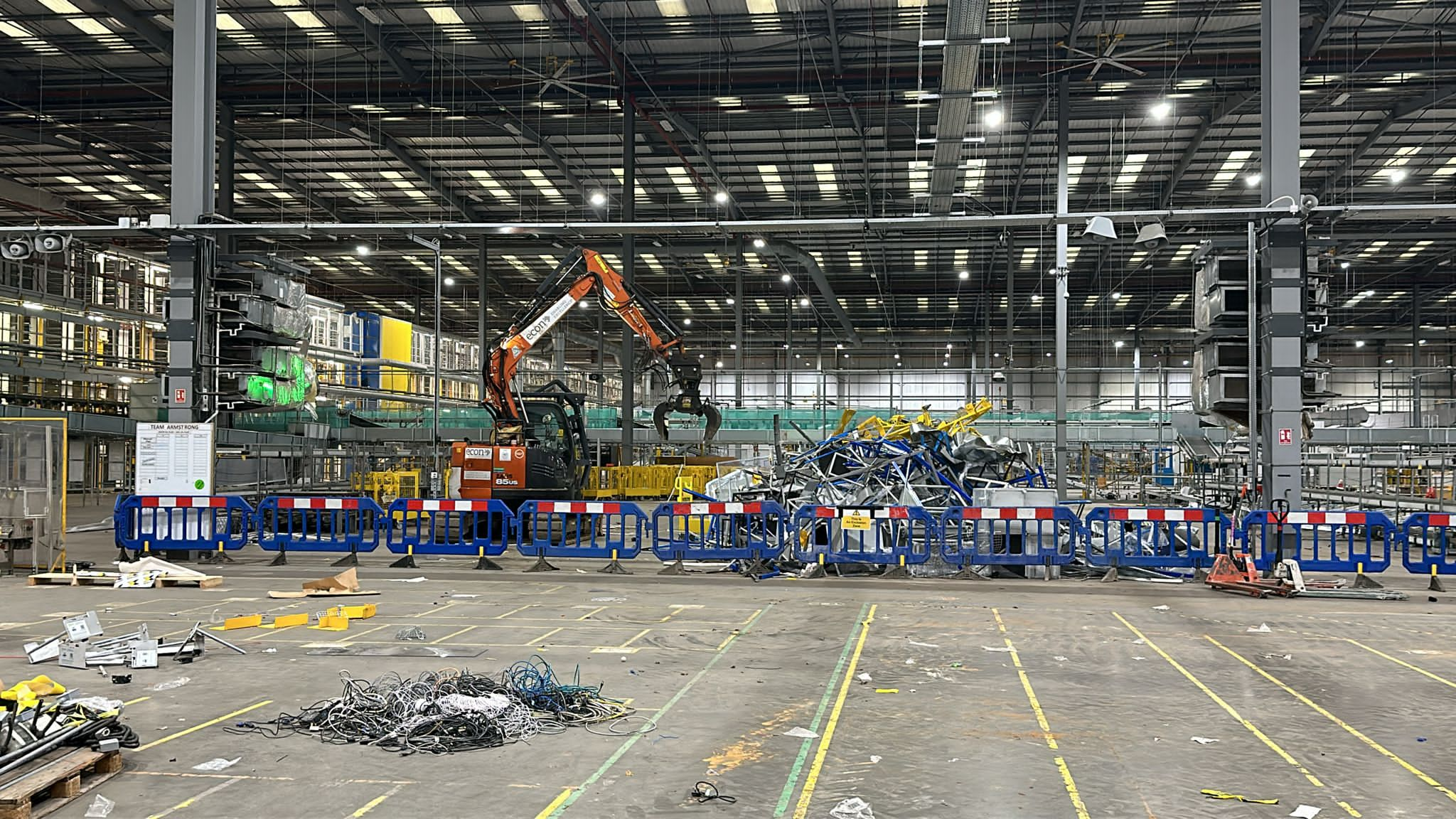
As part of our comprehensive industrial demolition and enabling works portfolio, Econ Group successfully completed the dismantling of a redundant Steam Turbine Generator (STG) and associated infrastructure within the Kemsley power infrastructure site. Acting as the Principal Contractor, we managed the entire scope of works from initial hazardous materials survey through to final removal of all arising materials — delivering a safe, compliant, and efficient project completed in 2022.
The Kemsley site, a significant power generation facility, housed a now-obsolete steam turbine hall with complex mechanical and electrical equipment integral to the generation process. The project involved the controlled dismantling and removal of the Steam Turbine Generator and its associated plant, which required specialist knowledge of industrial demolition, hazardous materials handling, and environmental compliance.
Our role was critical to ensure all works met stringent safety standards and adhered to regulatory requirements for hazardous waste removal, asbestos management, and environmental protection.
Before any dismantling activity commenced, ECON Group conducted a thorough Research and Development (R&D) hazardous materials survey of the turbine hall and associated equipment. This included detailed identification of potential asbestos-containing materials (ACMs), oils, lubricants, coolants, and other hazardous substances commonly found in power generation plants.
Our expert environmental team produced a comprehensive written report outlining all hazardous materials present and recommended safe removal and disposal protocols to mitigate risks during dismantling.
As the Principal Contractor, ECON Group took full responsibility for site safety management, coordination of all subcontractors, and compliance with Health & Safety Executive (HSE) regulations, including CDM (Construction Design and Management) regulations.
The core scope involved dismantling the Steam Turbine Generator (STG) complex and all ancillary components, including but not limited to:
Each item was methodically decommissioned and dismantled, prioritising safe handling of heavy mechanical components and containment of hazardous materials.
Due to the robust steel construction of the turbine hall and plant, many components required specialist hot cutting techniques, including oxy-propane cutting and advanced mechanical cutting methods. Our trained operatives, certified with CPCS/D90 plant operator qualifications and Controlled Cutting and Demolition Operative (CCDO) certification, carried out precision cutting to ensure safe disassembly without compromising surrounding structures.
The structural dismantling was closely supervised by our experienced structural engineer to assess load-bearing elements and sequence works to maintain site safety.
All dismantled materials were carefully segregated onsite to separate hazardous waste streams such as asbestos-containing insulation, contaminated oils, and chemical residues from general construction waste. This segregation facilitated compliant disposal and recycling where possible.
Our team ensured all hazardous waste removal followed Environment Agency regulations, with full documentation and waste transfer notes maintained for audit purposes.
Staffing Requirements:
1 x Project Manager, 1 x Site Manager, 1 x Site Supervisor,
6 x CCDO Labourers & Burners, Structural Engineer, 1 x Plant Operator 1 x Appointed Person
Training Required:
CPCS / D90 Plant Operators, Oxy / Propane Hot Cutting, CCDO




Econ Group tasked with carrying out the full enabling works within a 162,000sqft warehouse



